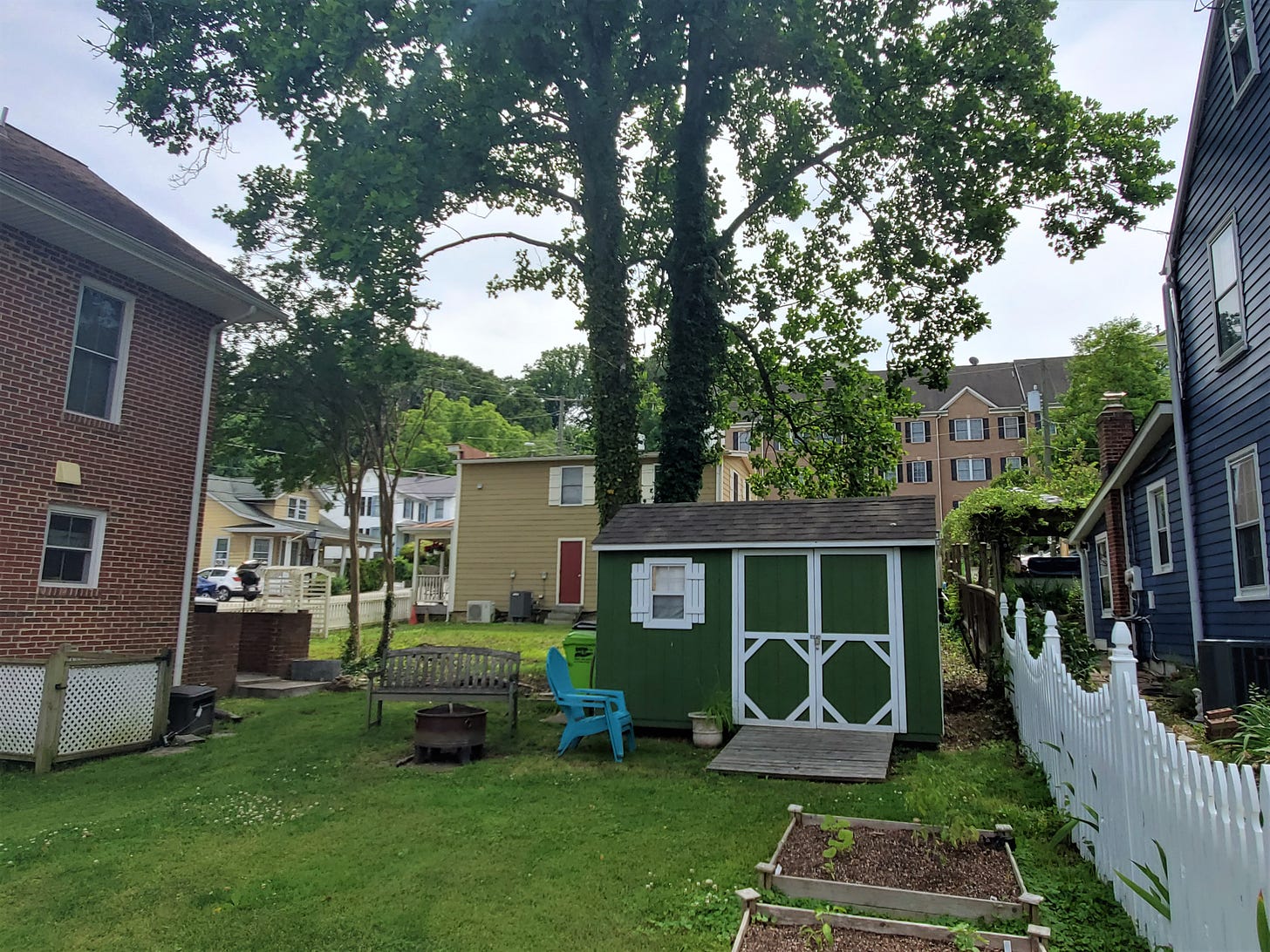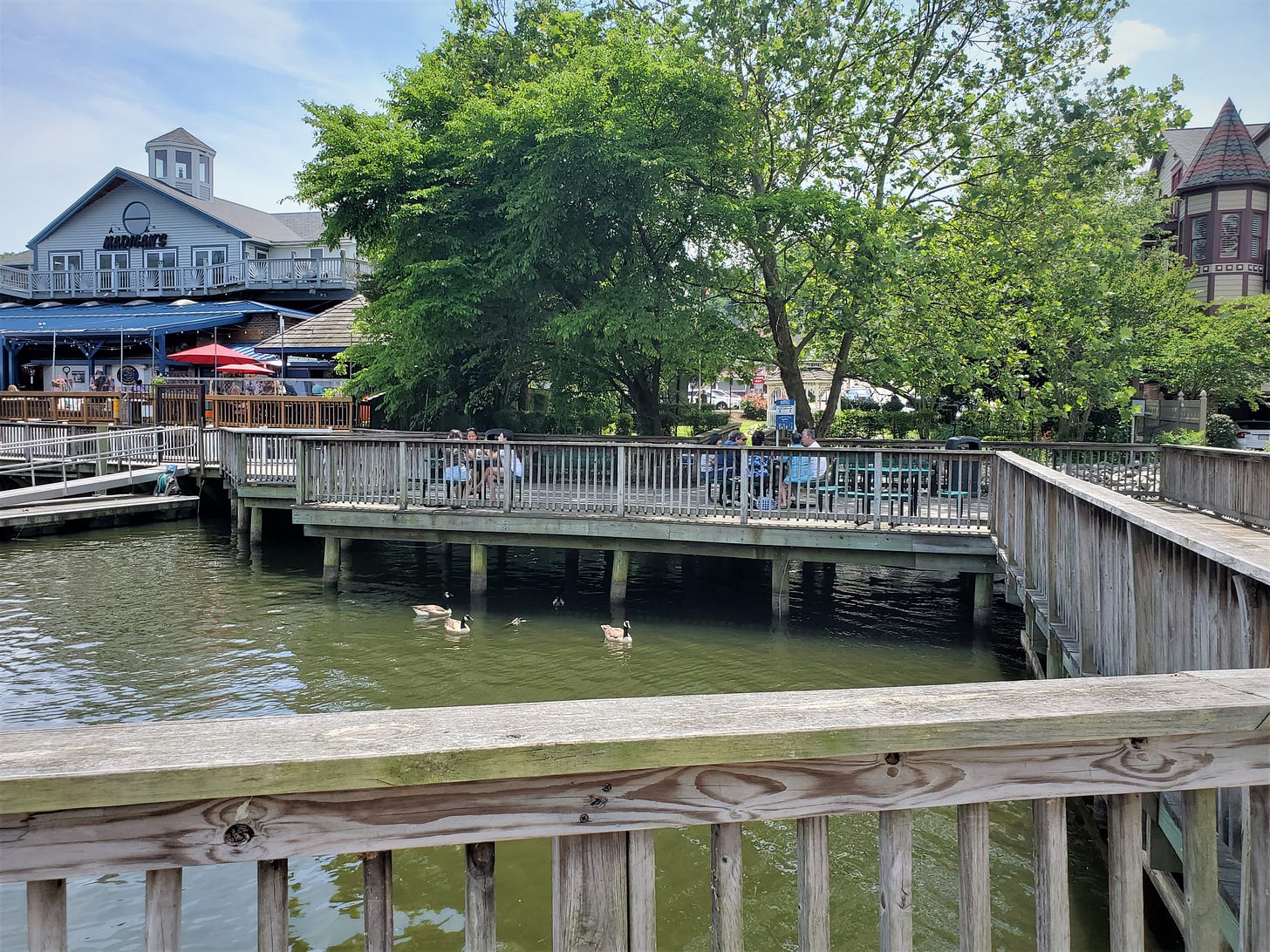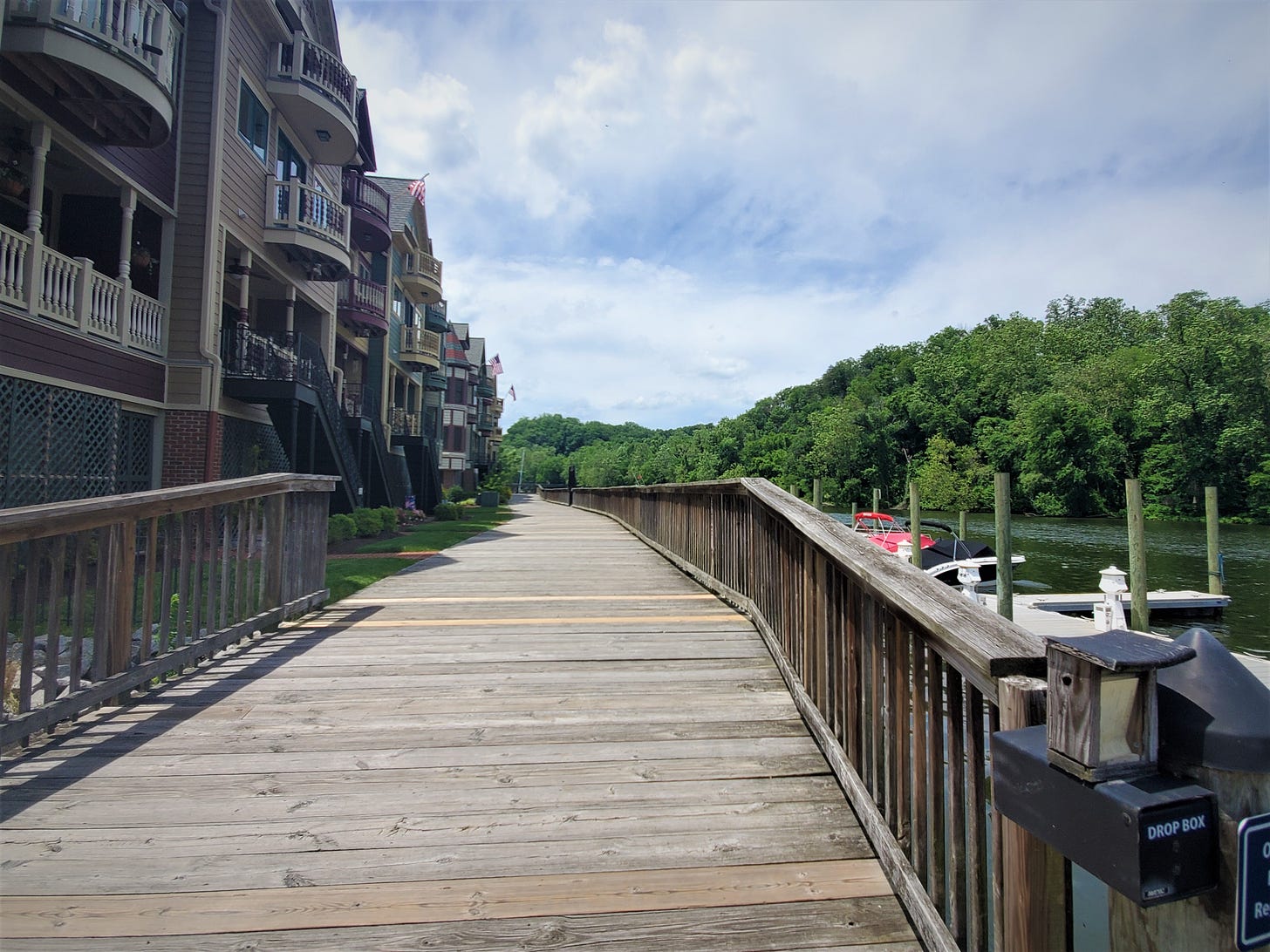Occoquan, Virginia's Embrace of Old and New
The small town balances a strong historic aesthetic with lots of new construction
I recently visited Occoquan, a historic riverside town at the northern edge of Virginia’s Prince William County about 40 minutes south of Washington, D.C. Like so many quaint little towns, Occoquan is small, exclusive, a little boutiquey, and has traded whatever commercial purpose it once had for more or less being a D.C. and Northern Virginia bedroom community.
This is a dynamic I’ve seen elsewhere in Virginia, for example in the historic villages of Waterford, in Loudoun County, and Clifton, in Fairfax County. It’s true of many Pennsylvania small towns. I saw it growing up in New Jersey, which is full of small towns that had economic functions in old regional economies that don’t really exist any more. (My hometown of Flemington was famous for peaches, glass, and pottery. Like so many small settlements, it had rail service.) Industrial or agricultural production at this level drives very few small-town economies these days. In some ways, the distinctive urban form of the 19th century town was bound up with the very different economic and transportation realities of the time. Perhaps one reason small towns feel a little bit like relics, despite their ubiquity, is because in some ways they are.
In this sense, these types of settlements can start to “feel the same.” But despite arising, declining, and reinventing themselves in a similar manner, America’s small towns and cities remain individually fascinating. And in Occoquan, that old town fabric is still alive.
The land on which Occoquan sits was settled by Native Americans, highlighting its geographically prime location, a huge factor in the survival and longevity of towns and cities. (As James Howard Kunstler often notes, this is a future asset in a world that may see a devolution of scale.) Occoquan was a mill and tobacco town, and it had a small port. Population hovered at around 300 for as long as Census figures exist; it only breached 1,000 in the last year or two.
First, I had to park. Earlier this year, after a period of study, Occoquan instituted free time-limited parking throughout its historic district. The new system was designed to “increase the availability of on-street parking spaces, reduce the practice of long-term parking in the district, and reduce non-patron use of prime business parking during peak business hours within the district.” (There are exemptions for residents.) The document also emphasized that parking remains free.
There’s a good case to be made for paid parking in areas with very high demand, such as the system in Old Town Alexandria. But the time-limited system is effective, and, what’s more, simple: No apps, tickets, pay stations, zones, two spots here for that store, two for that restaurant, one for electric vehicles here, one for subcompact vehicles there. The town feels lively and accessible, and there’s no learning curve for first-time visitors. Additionally, there are few parking lots or garages in Occoquan. Most spaces are simply on the street, while a few more are nestled into the informal spaces between detached structures. Occoquan accommodates the automobile, but it’s very much not built around it.
Speaking of those spaces—alleys, backstreets, paved yard areas—they serve a purpose besides accommodating empty cars or providing back entrances. They give a kind of three-dimensional feel to Occoquan’s streets. They make this very small grid feel bigger and richer than it otherwise would. They keep you engaged, mentally stimulated, and alert, in a way that’s tough to convey in words alone. It’s a similar feeling to or exploring an old house full of nooks and crannies. The unease induced by “flat” or “blank” streetscapes is more than aesthetic preference. There may well be something physiologically pleasing about this small-town urbanism.
In a similar vein, the variety of sizes, heights, and architectural styles in Occoquan’s buildings produces a coherent fabric rather than a feeling of chaotic mismatch. Think about this a little bit. In a standard suburban environment, where most structures are identical, or modifications of a type, anything different stands out. In a town, where the lots are smaller and the scale of everything is smaller, most buildings are at least a little bit unique. Paradoxically, this opens the door for more uniqueness, because one more addition isn’t going to produce a mismatch.
All of this, however, is Occoquan’s inheritance. Yes, much of this kind of urban fabric has been destroyed, and the places which retain it have a leg up, all things being equal. But it depends what they do with it now.
Which brings me to these riverside townhouses.
Begun in 2006, stalled during the Great Recession, and completed around 2014, they’re a new development known as Gaslight Landing. The first ones sold for over $1 million, and post-Recession sale prices aren’t that far behind. These are not exactly the kind of housing the D.C. area sorely needs. But they’re also residential infill construction in the sort of place that often resists any additions to the historic town. In the heart of downtown, they connect seamlessly with the existing grid.
Luckily, no historic structures met the wrecking ball here, either. The site was once home to a fuel oil depot, then a since-moved marina and boat dealer, and for years was a vacant lot. In front of the new townhomes is a public boardwalk park built around the same time, with some public seating as well, for relaxing or eating takeout from one of Occoquan’s many restaurants. Some of these restaurants are also just a stone’s throw from the townhomes. Despite these private homes backing onto the water, there is still an easily accessible public waterfront.
They fit in fairly well with the town’s existing fabric—at least that effort has obviously been made—and they also resemble the New Urbanist architecture of Seaside, Florida and Kentlands in Gaithersburg, Maryland. The details matter a lot: less obvious garages and car infrastructure, thoughtful siting to enhance the interplay of public and private, details and ornamentation that take little to implement but do wonders to remediate the “boxiness” of the structures.
Some long-time residents dislike the new buildings (as I learned from a discussion on a local Facebook group), and Occoquan’s mayor, Earnest Porta, suggested in 2014 that similar projects might run into opposition from “residents and business owners.” Nonetheless, it is instructive, and kind of cool, that they got built. Communities like Occoquan often end up as functional museums. It’s uncommon to see a historic town with a strong aesthetic and sense of place that is also growing and continuously alive. Development done right does not dilute or detract from what already exists, but complements it. Remember how Occoquan’s intact urban fabric sets it up for new growth.
Back in July, the Town Council unanimously approved, after two years and seven iterations, a riverfront mixed-use condo complex, on about an acre of underutilized formerly industrial land. Like the former marina site, the Mill at Occoquan project will come with a new public boardwalk. Most contentious was the original proposal’s height; after the final proposal shaved it down, Mayor Porta said, “At this point, candidly, it’s really hard for people to argue about the height of this building now that it’s about the same as buildings across the street.” (You can read a little more about Porta here, who reads as a nuanced and cautious voice against reflexive NIMBYism.)
Now, the Historic District isn’t quite all of Occoquan. There are some residential neighborhoods up above the old town, mostly modern and less distinguished townhouses. (Occoquan, notably, has very few single-family houses.) However, I was able to walk through these newer areas from the historic district quite easily, as the street connections are fairly good, especially given the steep topography.
A few of those lucky residents can view the river and historic town from their elevated windows or decks. They might reflexively oppose Occoquan’s new projects, or they might embrace them. But it’s hard to argue that the town hasn’t taken it slowly and done it well. They’re looking out at something special.
Related Reading:
300 People and History in Clifton, VA
Please consider upgrading to a paid subscription to help support this newsletter. You’ll get a weekend subscribers-only post, plus full access to the archive of nearly 300 posts and growing. And you’ll help ensure more material like this!











